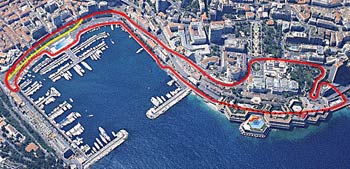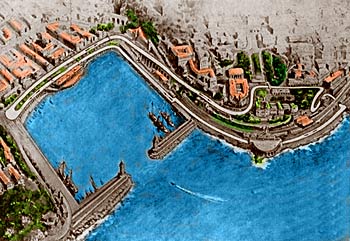 THE HISTORY OF THE GRANDS PRIX OF MONACO BY ROY HULSBERGEN THE HISTORY OF THE GRANDS PRIX OF MONACO BY ROY HULSBERGEN |
||
|
|
A Circuit in a City |
Search this site: |
| The Monaco street circuit has undergone many changes over the years. At the first Grand Prix in 1929 most of the streets were merely covered with sand and stones! The drivers were steering into heavy dust clouds. Over the years the surface got better, with pavement and later on tarmac. The main changes over the years were: the rascasse corner (previously the gasworks), the Loews tunnel (much longer), the swimming pool, the Anthony Noghès corner, the Ste-Devote modifications, the chicane in the port and the main overhaul of the pit lane. Monaco invented the checkered flag in 1932 (there were too many occasions where any flag was used to finish the race and the drivers did not get it and kept on racing), originally 2 black squares and 2 white, while in later years adding more squares. This circuit also was the first to use guard rail (it was tested while having the Rally going through town), water filled plastic containers and used tyres for car, driver and public protection (it saved many a driver). Monaco ACM invented also to start the race with a traffic light. The safety features at this circuit have always been the best in the world, it was also necessary since the cars are literally flying past public and houses at only a few meters distance. The ACM was one of the first to start stringent professional training for circuit officials to enable fast intervention by different teams at any possible accident. The first motor sporting event after World War II took place at Monte Carlo. The American soldiers were getting bored, thus an officer came with the idea to hold a trial for the Jeeps and GMC trucks of the 36th American Infantry Division on the old Monaco Grand Prix circuit on August 5, 1945. |
||
|
||
A lap in 1972 with James Hunt |
||
| Annual building of the circuit | Tweet | |
|
|
||



